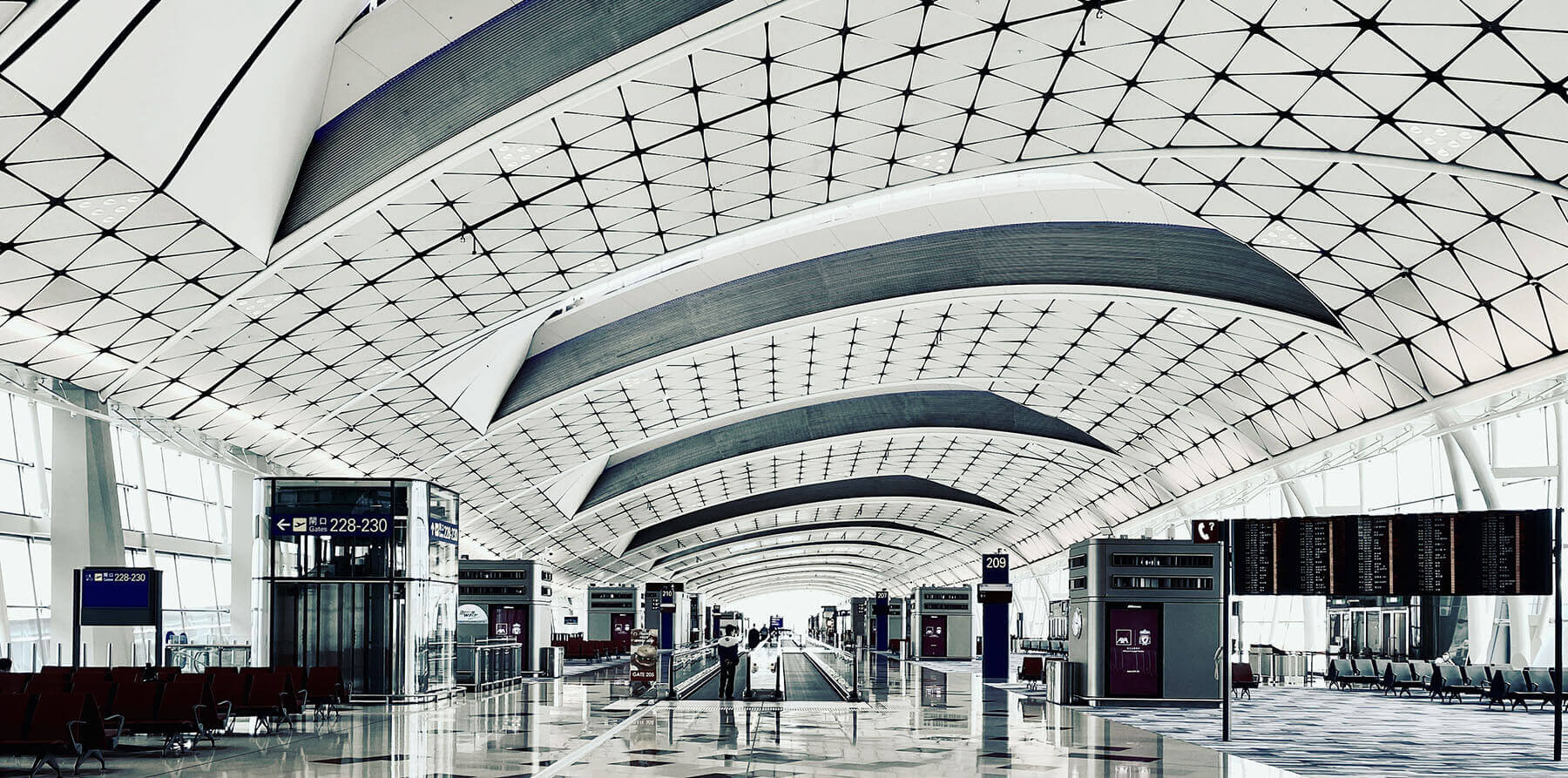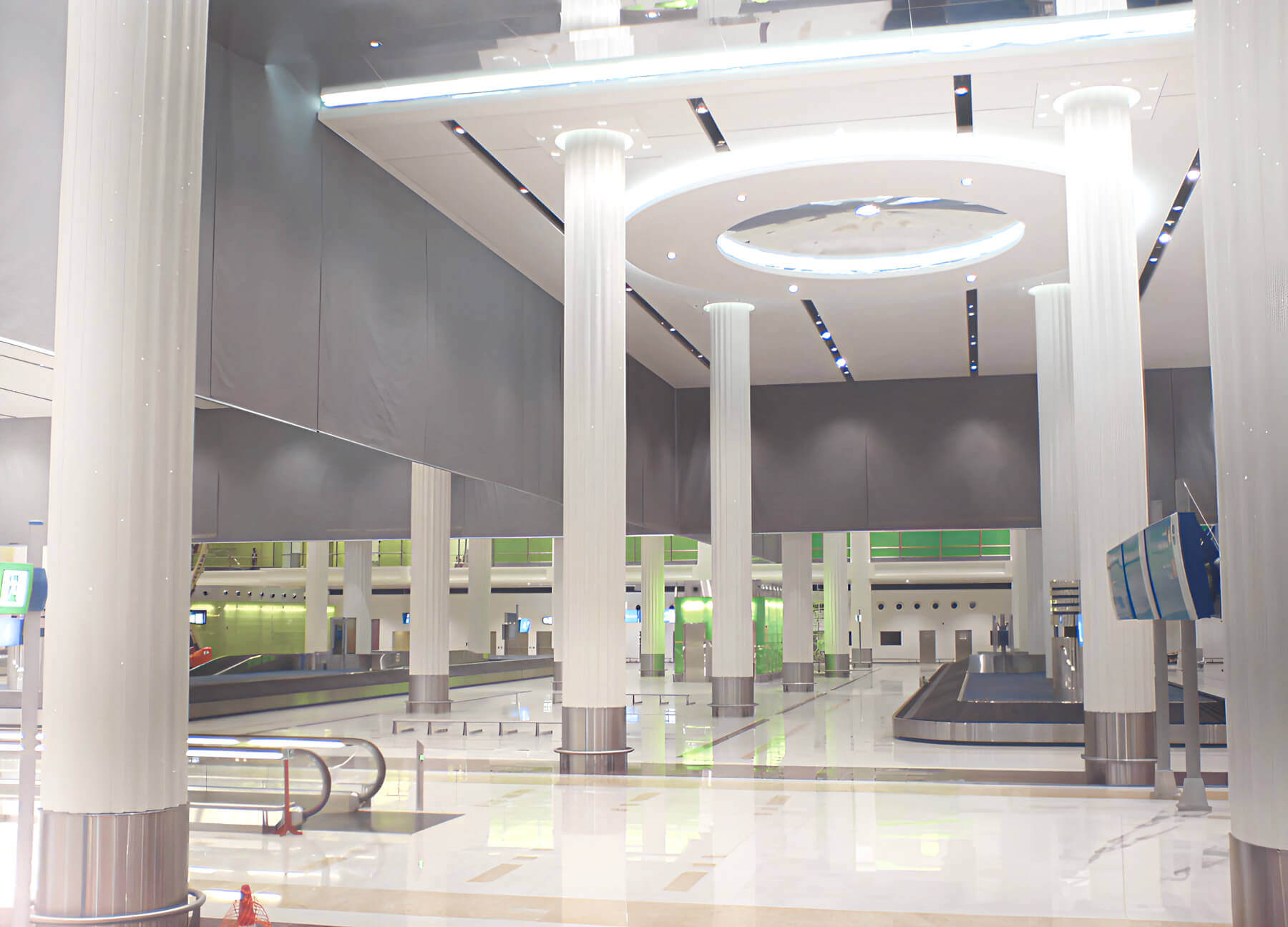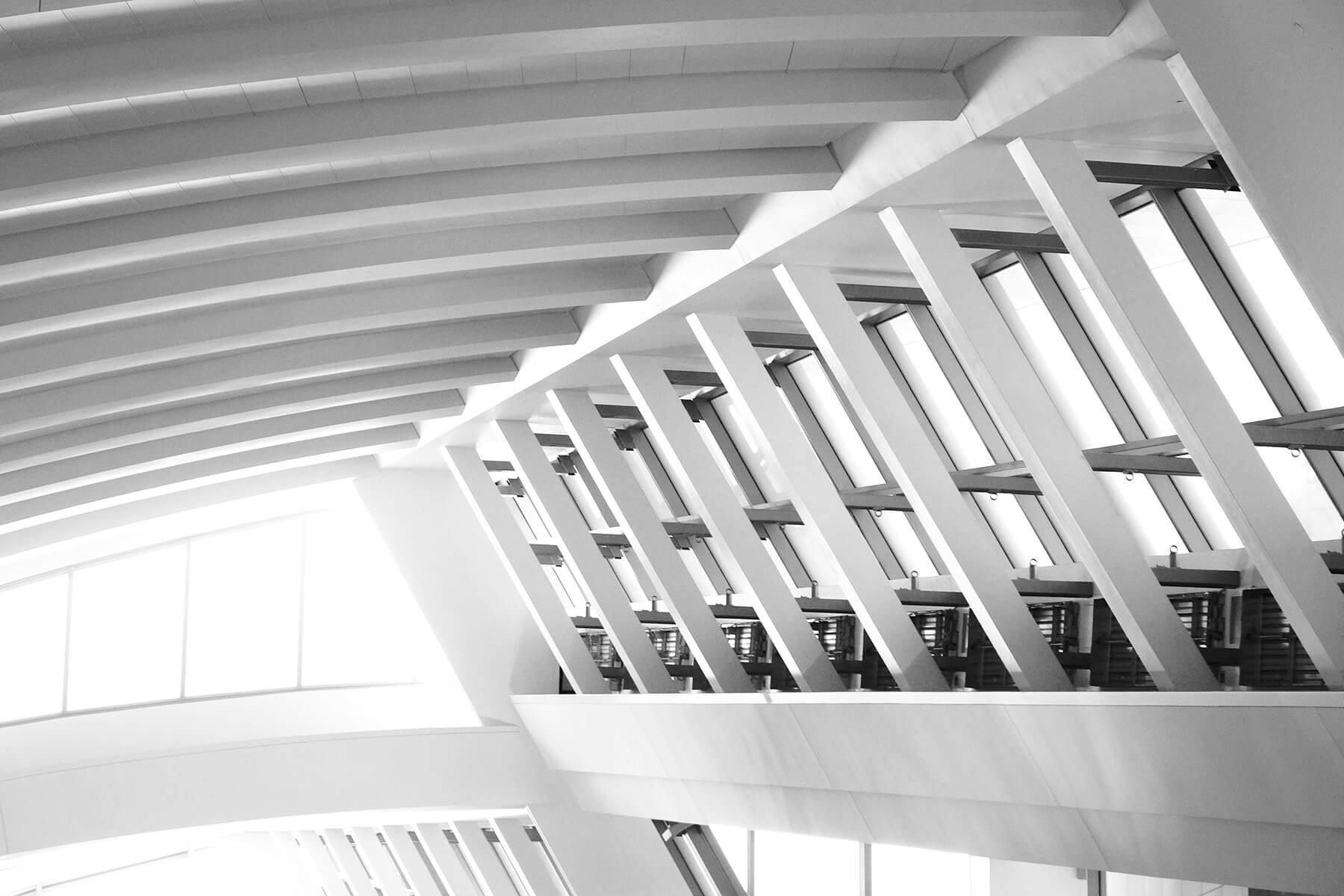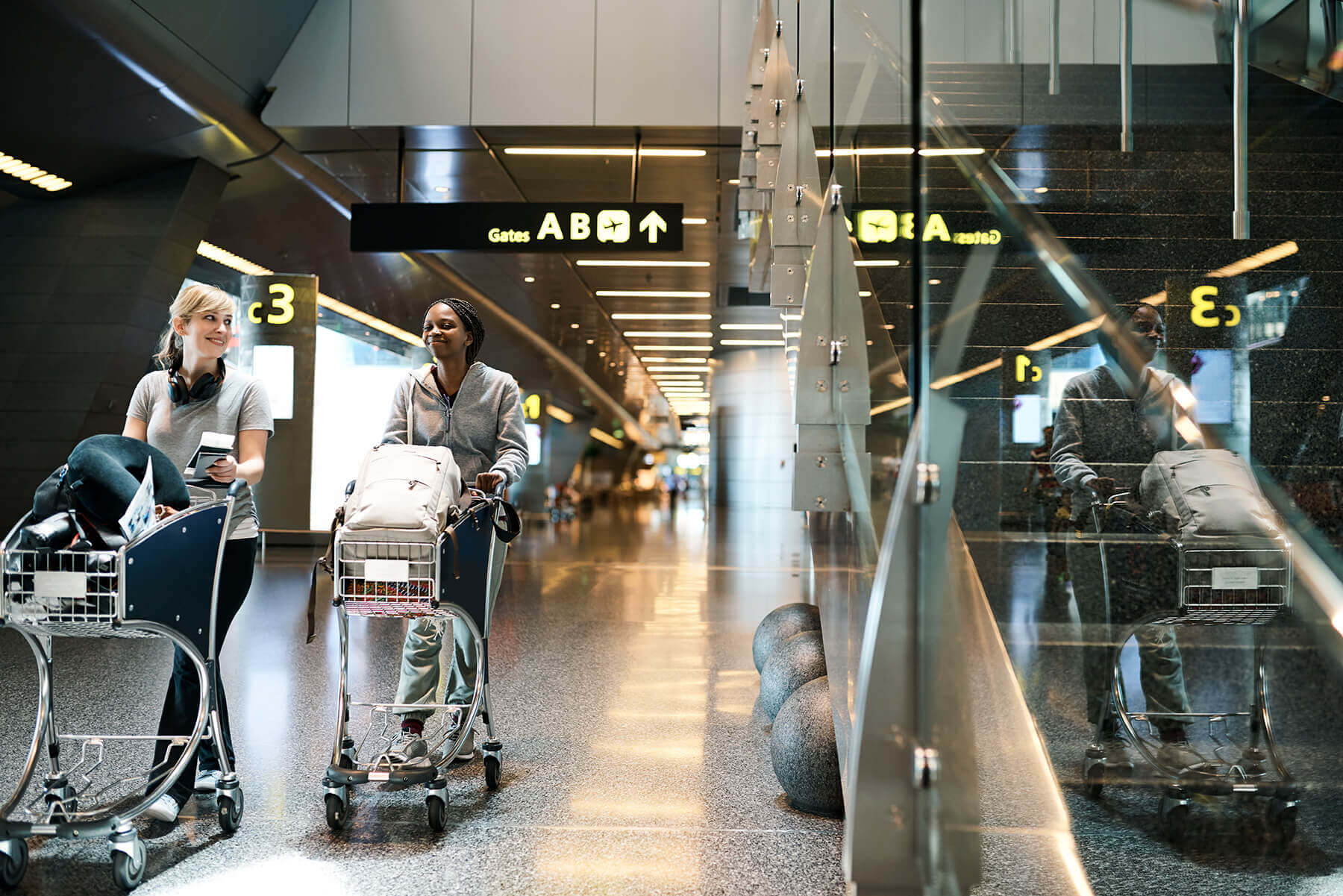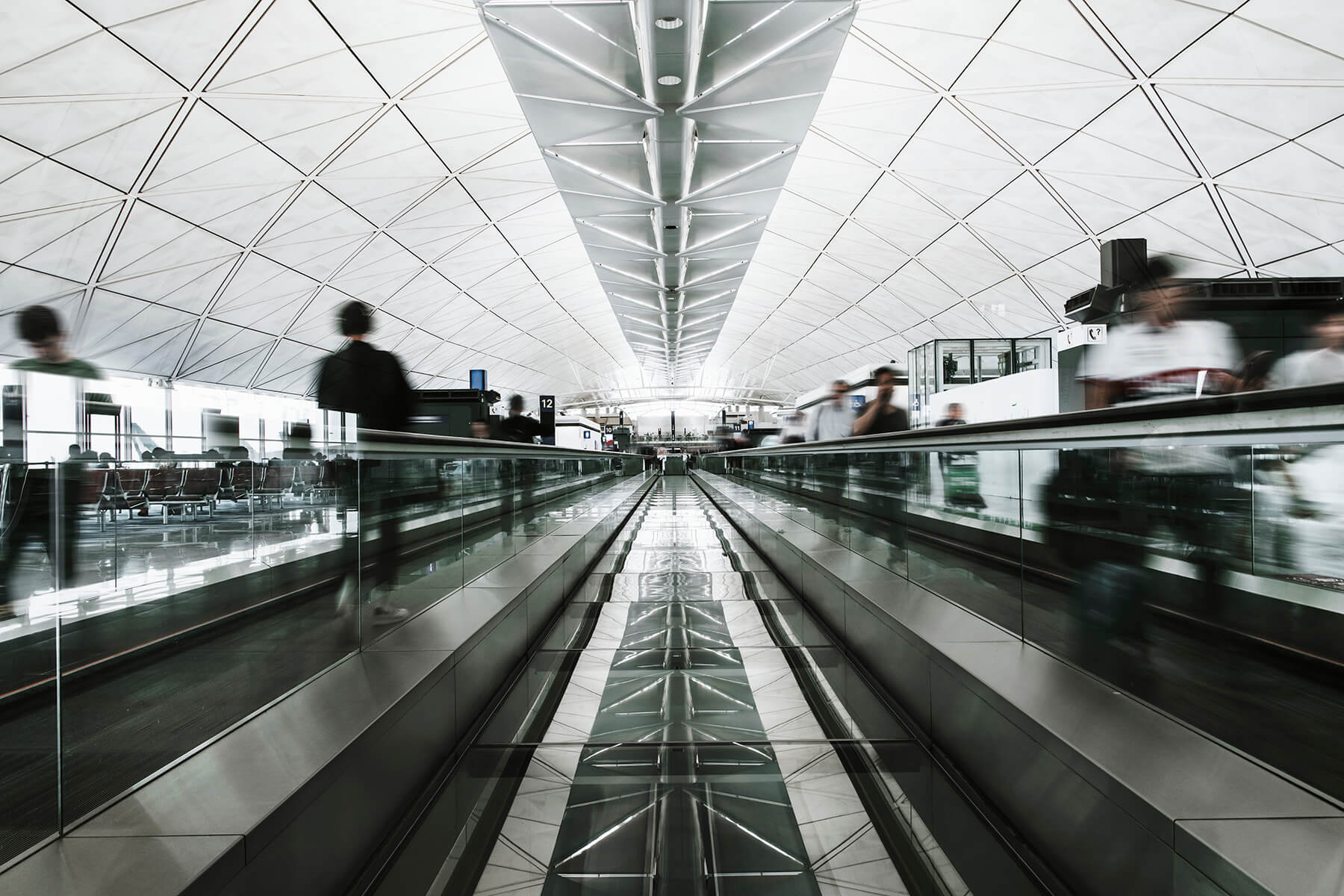How can architects keep open airy space in airports without compromising fire safety?
When designing airports, architects face unique challenges due to the vast, open-plan spaces and the innovative nature of these structures. Without effective fire compartmentation and smoke control systems, such as those that segment open areas in the event of a fire, both smoke and flames can rapidly spread throughout the terminal.
Airports experience extremely high footfall, particularly in terminals with multiple levels, which increases the risk to people during a fire. This makes it crucial for fire and smoke safety solutions to be meticulously aligned with emergency escape procedures. In these large, open spaces, it can be challenging for passengers to quickly identify the safest exit route, especially when the location of the fire isn’t immediately apparent.
Unfortunately, several airport fire disasters over the past few decades might have been prevented—or at least better controlled—had effective fire safety measures, such as fire curtains, been in place.
Airport Fire Disaster History
The 2013 Nairobi Airport Fire; while thankfully didn’t have any fatalities, two people were seriously injured. It is not known what the cause of the fire was, but the substantial damage caused by the fire resulted in the international arrival and departure units of the Jomo Kenyatta International Airport being completely devastated. As a result, the airport had to close and divert its air traffic to Uganda, Tanzania and other airports in Kenya and it took a year for Jomo Kenyatta International Airport’s operations to be partly re-established, before a new unit was able to open up in July 2014.
Known as the worst structural fire to have occurred in any commercial airport building the 1996 Düsseldorf Airport Fire, which tragically claimed the lives of 17 people as well as seriously injuring over 60 people.
It was welding works which caused the fire, where drops of molten metal met with the polystyrene insulation. Since the fire spread in the space between dropped ceilings and actual ceilings, the fire was able to spread rapidly to other terminal buildings, unnoticed. The plumes of smoke and fire quickly filled the terminal buildings completely blocking off all safe evacuation routes, which led to all fatalities being caused by toxic smoke inhalation.
The fire itself, not stopped by airport fire barriers, was free to spread across the open space areas and in fact, many of the firefighters did not have any experience with fires of that kind, or the equipment necessary, which would have justified the need for safe fire barriers even more so. The fire destroyed terminals A and B, which were rendered unusable and it is estimated that a total of DM 1 billion of damages was caused.
What seems apparent in both of the above examples is that the scale of damage would have been greatly reduced if appropriate fire compartmentation and smoke control measures had been taken. One way in which to fire compartmentise and control the spread of smoke in an open space is with the installation of fire and smoke curtains, tailored to the buildings individual needs.
Fire and Smoke Curtains – Airport Design
Fire and smoke curtains for airports are normally designed to remain hidden until deployed when activated by an alarm or detector signal, seamlessly matching the airport’s often unique ceiling configuration. Coopers Fire fire curtains and smoke curtains are completely bespoke and each curtain configuration is expertly designed according to the individual building and its own fire exits and safety procedures. It is this design, whereby the curtains descend safely to their operational position upon an alarm or detection signal, which helps enable a safer form of evacuation.
Solutions are available in different ratings from 30 minute protection to up to 240 minutes and with no restrictions for minimum or maximum widths, Coopers Fire, Smoke and Fire curtains are therefore a fantastic solution to enhance safety in large expansive open areas, as well as providing a bespoke solution tailored to individual needs and budgets
Case Study: Dubai International Airport
Dubai International Airport, one of the largest transport hubs in the world accommodating over 80 million travellers a year, is home to the world’s second largest building, Terminal 3. When Dubai International Airport called for enhanced fire safety procedures to coincide with Terminal 3’s very large, modern open plan design, Coopers Fire was awarded the biggest scheme of smoke protection works ever to be conducted in a single building, following a competitive tender.
Areas of high footfall were the main parts of the airport requiring smoke compartmentation, including the baggage halls, departure lounges and concourses. The strategy was to install around 1000 SmokeStop™ smoke curtains in the form of a grid network.
The advanced fire-resistant fabric of the SmokeStop™ curtains is encased in a compact steel housing which allows for a higher level of protection and control. The SmokeStop™ smoke curtains remain invisibly retracted until activated by an alarm or detector signal, at which time it descends safely under controlled descent by gravity fail-safe. Once deployed, the curtains turn the open space into compartments, controlling the spread of toxic smoke to other areas of the building as well as reducing the damage caused by both smoke and heat. The largest SmokeStop™ smoke curtain on the multi-roller system that was used to meet the terminal’s requirements spanned the concourse with a width of nearly 0.25km.
Coopers was committed to meeting the challenging schedule and the team of dedicated project managers and engineers successfully manufactured, installed and commissioned each SmokeStop™ smoke curtain before the deadline.
